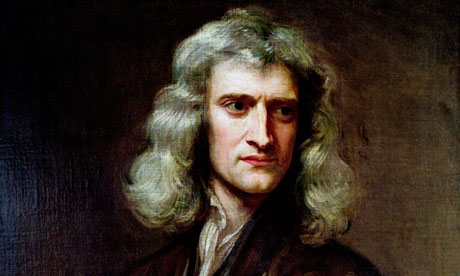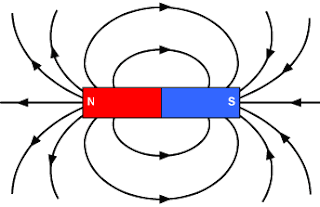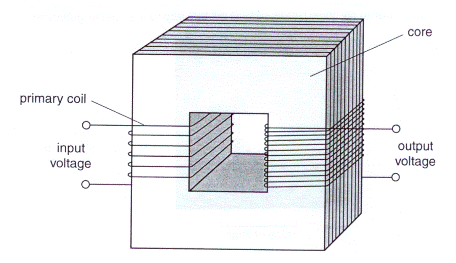
Reasons Newton was a pretty cool dude.
Well this guy Newton taught us a lot of stuff, the most famous being his 3 laws. These laws, however, are the basic ideas behind some pretty fabulous inventions and concepts.

10. We can use Newton's nifty laws to determine the height of a building.
Yep, that's right.Newton’s second law states that force is directly proportional to acceleration and mass is inversely proportional to acceleration.
or...
a=f/m
From Newton's Second Law we found our way to Free Fall.
An object in free fall has a constant acceleration of 9.8 m/s^2 (or 10 as we used it). In our lab from Unit 2 we used this nifty number to calculate the height of third Anderson by dropping a ball multiple times from the third floor and taking the average time it took to reach the ground. We then used that average time and using the equation d=1/2gt^2 solved for the distance of the building.

9. Newton saves our lives with airbags (in terms of momentum)!
Newtons 3rd law states that for every action there is an equal but opposite reaction. This led into momentum.
Momentum=(mass)(velocity).
Momentum=p.
change in p= pfinal-pinitial.
Impulse=J. J=F(change in t).
J=change in P.
Momentum=p.
change in p= pfinal-pinitial.
Impulse=J. J=F(change in t).
J=change in P.
Momentum will be the same no matter what, so the impulse will be the same. Airbags increase the time impulse occurs, which means the force will be less (remember the big F and little t?). And a smaller force will lead to less of an injury!

8. Newton helps us flip!
Yep, that's right, all those gymnasts you see at the Olympics, they have one big guy to thank: NEWTON.
Newton's first law of motion talks a bit about inertia. It says: An object at rest remains at rest unless acted upon by a force. An object in motion remains in motion, and at a constant velocity, unless acted upon by a force.
Inertia is the tendency of an object to resist any change in its motion.
In Unit 5 Inertia took a different turn. Rotational Inertia. w\Which is how much an object is willing to spin.
When gymnasts are flipping they tuck their arms close to their body, bringing their mass closer to center, decreasing their rotational inertia and making them spin fast enough to complete the turns.
7. Newton helps us play sports!
Rotational Inertia (which ties back into Newton's first law) can also help us run!
Runners bend their knees when running because it lowers their center of gravity closer to the base of support making them harder to push down, and in a sports like Lacrosse or Football some contact is possible. Also, by bringing mass closer to the center of mass rotational inertia decreases meaning the ability to spin increases for when they need to be able to make those quick turns

6. Newton helped me make a mouse trap car!

6. Newton helped me make a mouse trap car!
 Newton’s 1st Law- this is the law of inertia which states that an object at rest will remain at rest until a force acts to move it and an object in motion will stay in motion until a force acts to stop it. Our car wanted to stay moving so all we had to do to keep it that way was decrease the forces acting to stop it, such as friction.
Newton’s 1st Law- this is the law of inertia which states that an object at rest will remain at rest until a force acts to move it and an object in motion will stay in motion until a force acts to stop it. Our car wanted to stay moving so all we had to do to keep it that way was decrease the forces acting to stop it, such as friction. Newton’s 2nd Law- this is the law of acceleration which states that acceleration is equal to fnet over mass or a= fnet/m. By making our car lighter we could increase its acceleration because mass is inversely proportional to acceleration. Much the same way if we could increase the force we could also increase the acceleration.
Newton’s 3rd Law- this is the law of action and reaction which states that for every action there as an equal but opposite reaction. By rotating our axle backwards and winding the string tighter we knew the car would rotate faster forwards.

5. Newton helps us measure force!
This guy Newton was so fabulous, he has his own system of measurement.
Force is measured in Newton's.
But wait, just what is force you may ask? A force is a push or a pull that acts on an object.
Net Force: all forces acting on an object added together
Equilibrium: when an object is at rest or moving at a constant velocity, when all forces acting upon an object are equal and opposite.

4. Newton explains seat belts!
C'mon, we've all been there, asking why exactly we need those stretchy strips of material keeping us in our seats.
Well, Newtons first law of
motion states that an object in motion will remain in motion and an object at rest will remain at rest until a
force acts upon it. Therefore when a car stops and our bodies are moving
forward they want to continue that way a seat belt keeps us from crashing through
the windshield.

3. Newton helps us pack!
Packing can be a hassle, especially when you have all those heavy boxes. Newton's second law helps us figure out how to move those gigantic bins of shoes and blazers.
For example:
If you were pushing an object with 200N of force
and the acceleration was 2m/s^2, what would happen to the acceleration is your
force increased to 300N? How do you know?
The
acceleration would increase because force and acceleration are proportional as
defined by Newton’s second law of motion which states that mass is inversely
proportional to acceleration and force is proportional.

2. Newton keeps our muscles working!
Newton's third law states that for every action there is an equal and opposite reaction.
So when we push on a wall or lift weights our muscles feel a force because the weights and the wall are exerting a force on them. The heavier the weight, the more force your muscles have to exert to make the forces equal and opposite.
1. Newton helps us make HOVERCRAFTS!!!!!!!!!!!!!!!!!!
1. Newton helps us make HOVERCRAFTS!!!!!!!!!!!!!!!!!!
You heard that right. HOVERCRAFT
Newton's first law states that an object at rest will remain at rest unless acted on by an external force An object in motion continues in motion with the same speed and in the same direction unless acted upon by an external force.
Friction is tension between two objects that are touching. A hovercraft in motion will eventually come to rest because of friction and Newton 's First Law.
Without Newton, we wouldn't have his first law, then we wouldn't have friction, and then we'd never stop moving!
So thanks Newton, for just being a generally cool dude!



